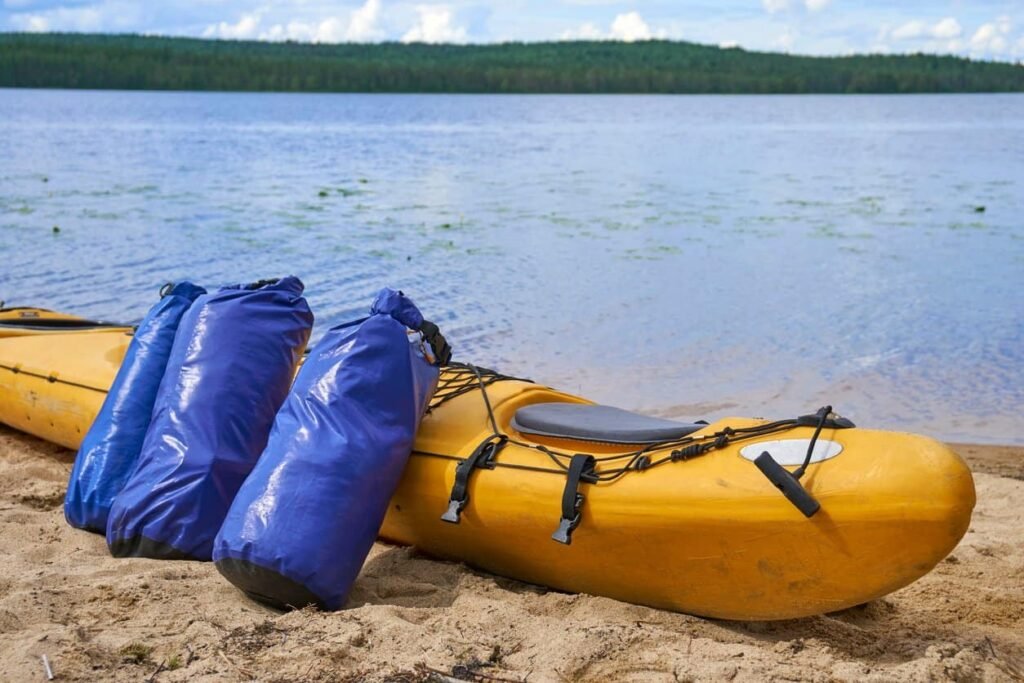
When planning for an adventure that might get you wet, choosing the right dry bag is crucial. The debate between PVC and Nylon dry bags is a common one among outdoor enthusiasts. This article aims to shed light on which material might be the best fit for your needs.
PVC Dry Bags – Durability and Protection
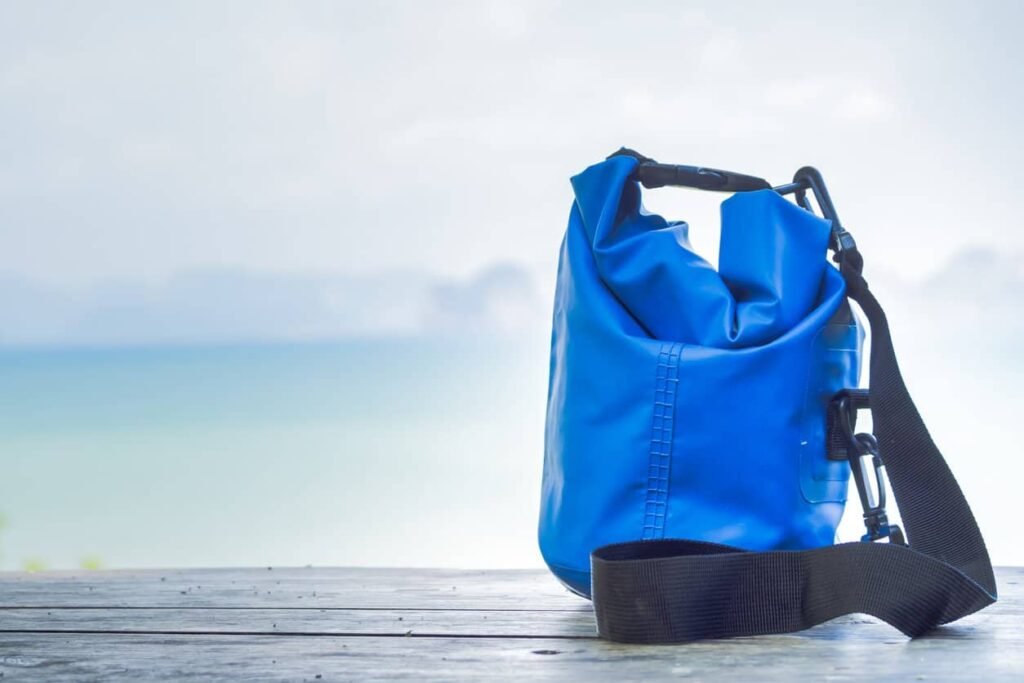
Material Strength and Resilience
PVC dry bags are known for their robustness, crafted from thick, durable plastic materials. This strength makes them ideal for withstanding harsh environments, from jagged rocks in riverbeds to abrasive surfaces in rugged terrains. Their ability to resist punctures and tears is a key factor for adventurers who face challenging conditions.
Waterproofing Capabilities
The waterproof quality of PVC dry bags is unparalleled. Thanks to the material’s innate water-resistant properties, these bags ensure that the contents stay completely dry. The effectiveness of PVC in preventing water ingress, even when submerged, makes it an excellent choice for water sports like kayaking or rafting.
Longevity and Durability Over Time
PVC dry bags are not just strong; they’re built to last. Their resistance to UV light, abrasion, and environmental factors means they can serve reliably for years, even with frequent use. This long-term durability translates to cost-effectiveness, as the need for frequent replacements is significantly reduced.
Versatility in Design and Usage
Modern PVC dry bags come in various designs, accommodating a wide range of activities. From compact models suitable for day trips to larger variants for extended expeditions, there’s a PVC dry bag for every need. Additionally, features like transparent windows, multiple attachment points, and ergonomic straps enhance their usability.
Nylon Dry Bags – Lightweight and Versatile
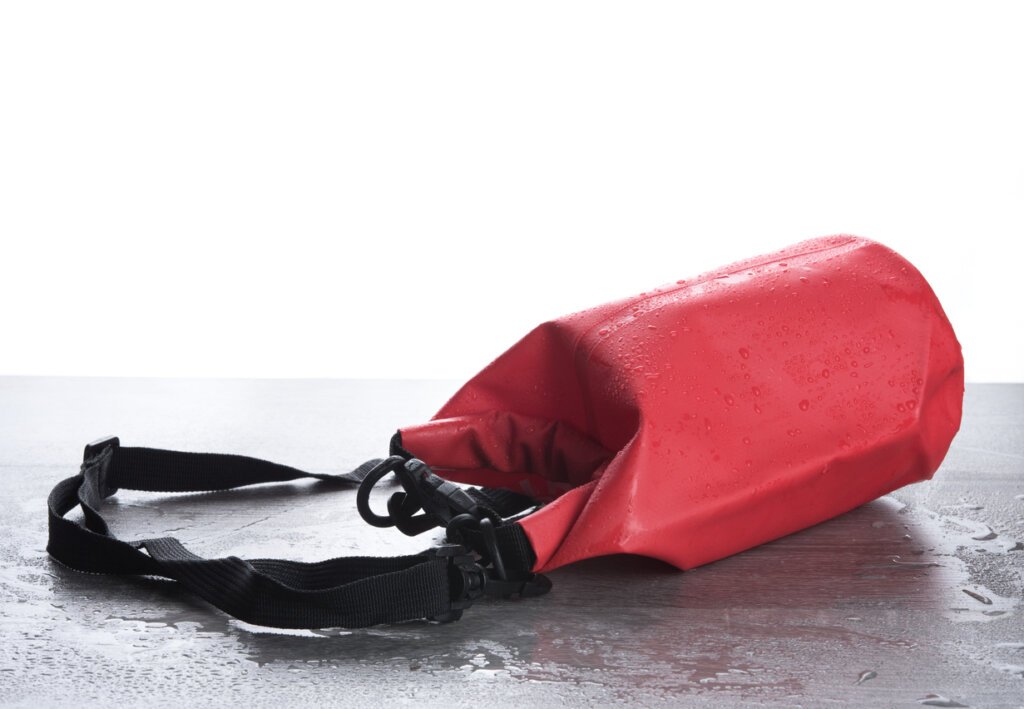
Featherlight Material for Easy Portability
Nylon’s most notable feature is its light weight. This makes Nylon dry bags exceptionally easy to carry, reducing the overall load for hikers, backpackers, and travelers. Whether you’re trekking up a mountain or navigating through an airport, a Nylon dry bag won’t weigh you down.
Flexibility for Compact Storage
Unlike the more rigid PVC, Nylon offers remarkable flexibility. This means you can easily fold or roll up a Nylon dry bag when it’s not in use, saving valuable space in your backpack or storage area. This flexibility also allows for easier packing of irregular-shaped items.
Variety in Design and Features
Nylon dry bags come in a plethora of designs, catering to a wide range of uses. From simple, single-compartment bags to those with multiple pockets and compartments, there’s a design for every need. Additional features like clear panels for visibility and external pockets for quick access increase their functionality.
Water Resistance with Advanced Coatings
While Nylon is inherently less waterproof than PVC, modern Nylon dry bags are treated with advanced coatings to enhance their water resistance. These coatings ensure that your belongings stay dry in moderate wet conditions, making them suitable for light water sports and rainy outdoor activities.
Eco-Friendly Options and Sustainability
In recent years, the focus on sustainability has led to the development of eco-friendlier Nylon dry bags, made from recycled materials and produced with environmentally responsible methods. These eco-conscious options appeal to the growing number of environmentally aware consumers.
Comparing PVC and Nylon – What’s Best for You?
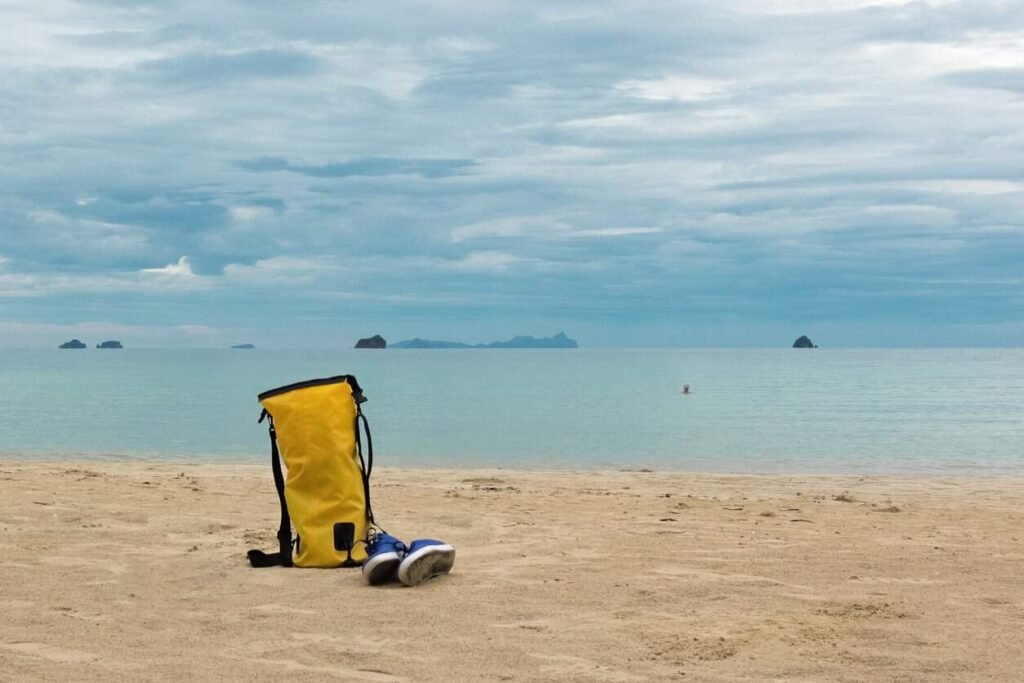
Durability and Environmental Exposure
PVC bags excel in durability and are better suited for harsh environmental conditions. They are ideal for activities involving prolonged exposure to water, such as kayaking or boating.
Weight and Ease of Transport
For those who prioritize lightweight gear, especially backpackers and trekkers, Nylon dry bags are the clear winner. Their lighter material makes them easier to carry over long distances. PVC bags, due to their heavier construction, are more suitable for situations where the bag will not be carried extensively, such as in water sports or car camping.
Cost and Longevity
When considering the cost, it’s important to factor in the longevity of the bag. PVC dry bags typically offer a longer lifespan due to their robust nature, which can make them more cost-effective in the long run, despite a potentially higher initial price. Nylon bags may be more affordable upfront but might require more frequent replacements, depending on usage.
Understanding the Fabrication Process
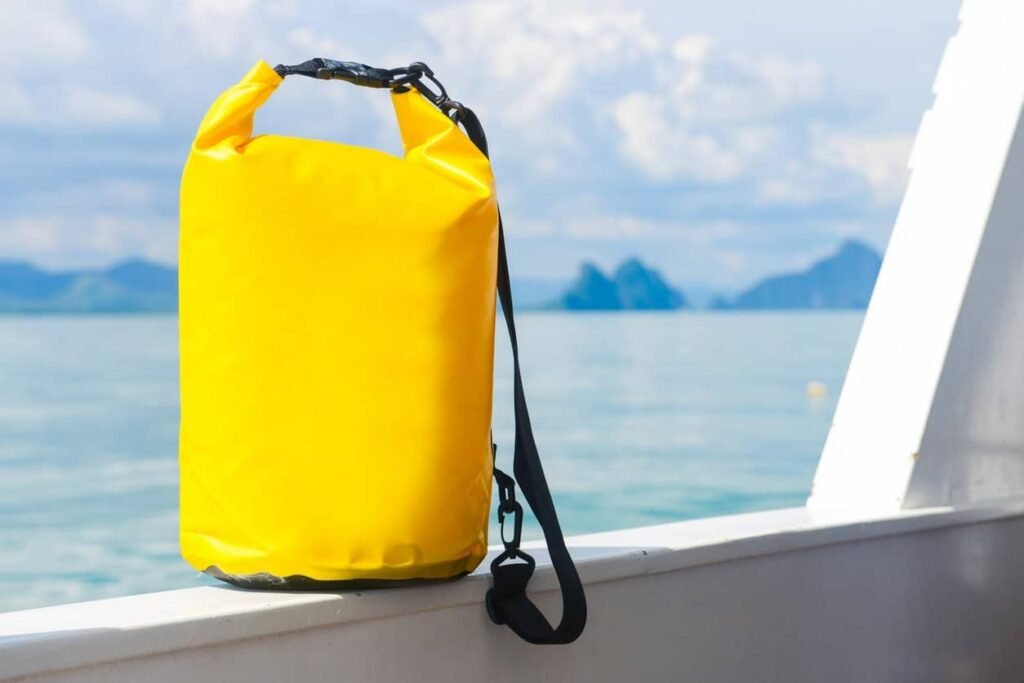
Material Composition and Treatment
PVC dry bags are made from a heavy-duty plastic compound, providing a robust and waterproof barrier. These bags often undergo special treatments to enhance UV resistance and prevent color fading. Nylon dry bags, typically made from a lighter, more pliable fabric, are coated with waterproofing substances to improve their water resistance.
Seam Construction and Waterproofing
The waterproof integrity of a dry bag largely depends on its seams. PVC bags are usually RF welded (radio frequency welding), creating strong, watertight seams. Nylon bags, on the other hand, are often sewn and then taped or sealed to ensure waterproofness, which may be less robust than welding but offers greater flexibility.
Design Innovations and Customizations
Modern dry bags, whether PVC or Nylon, feature a range of design innovations. This includes ergonomic designs for better carrying comfort, modular systems for organization, and customizable options like color choices and additional pockets or straps.
Quality Control and Testing
Quality control is a critical part of the dry bag manufacturing process. Both PVC and Nylon bags undergo rigorous testing, including water immersion tests and durability assessments, to ensure they meet the required performance standards.
User Experience and Comfort
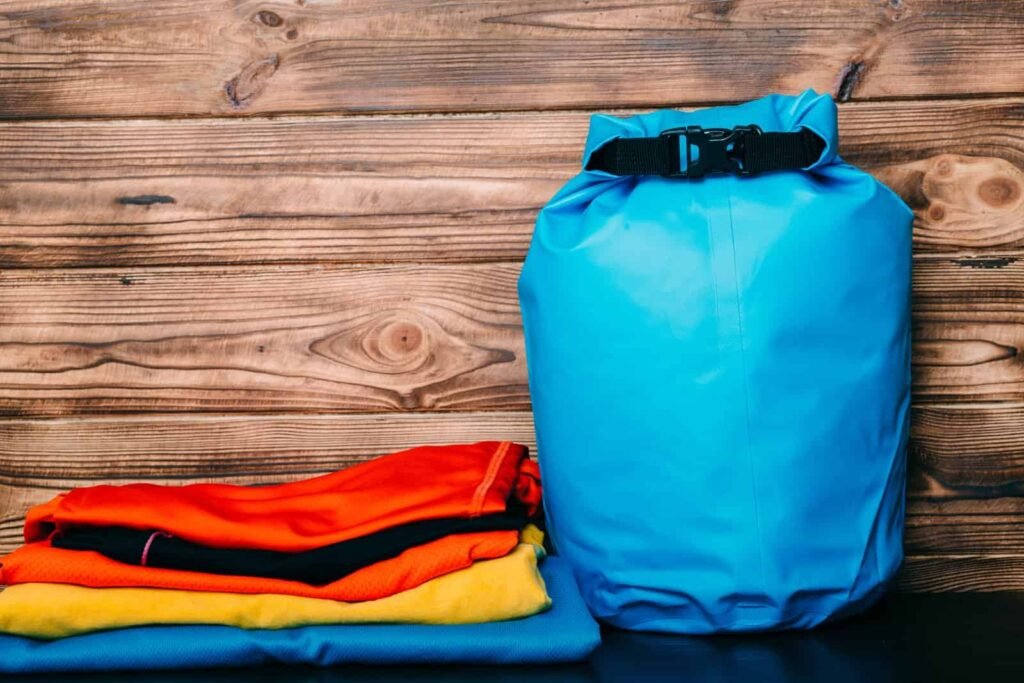
Ergonomics and Wearability
The ergonomics of a dry bag significantly impact its wearability, especially during extended periods of use. Nylon bags are generally more ergonomic due to their lighter weight and flexible nature, making them easier to carry and adjust to the body’s contours. PVC bags, while offering superior protection, can be more cumbersome due to their rigidity and weight, potentially causing discomfort during long treks or when fully packed.
Adjustability and Access
A key component of user experience is how easily one can access and adjust their bag. Nylon dry bags often come with more adjustable features, such as multiple straps and pockets, allowing for better organization and accessibility. PVC bags, designed with durability in mind, might offer fewer adjustable features but often provide larger single compartments, ideal for storing bigger items.
Comfort in Various Conditions
The comfort of a dry bag can vary depending on the environmental conditions. In hot and humid conditions, Nylon bags can offer more breathability, reducing sweat and discomfort when carrying the bag against the body. PVC bags, though less breathable, are unmatched in cold and wet environments where the bag’s exterior can protect against elements.
Cost-Effectiveness and Value
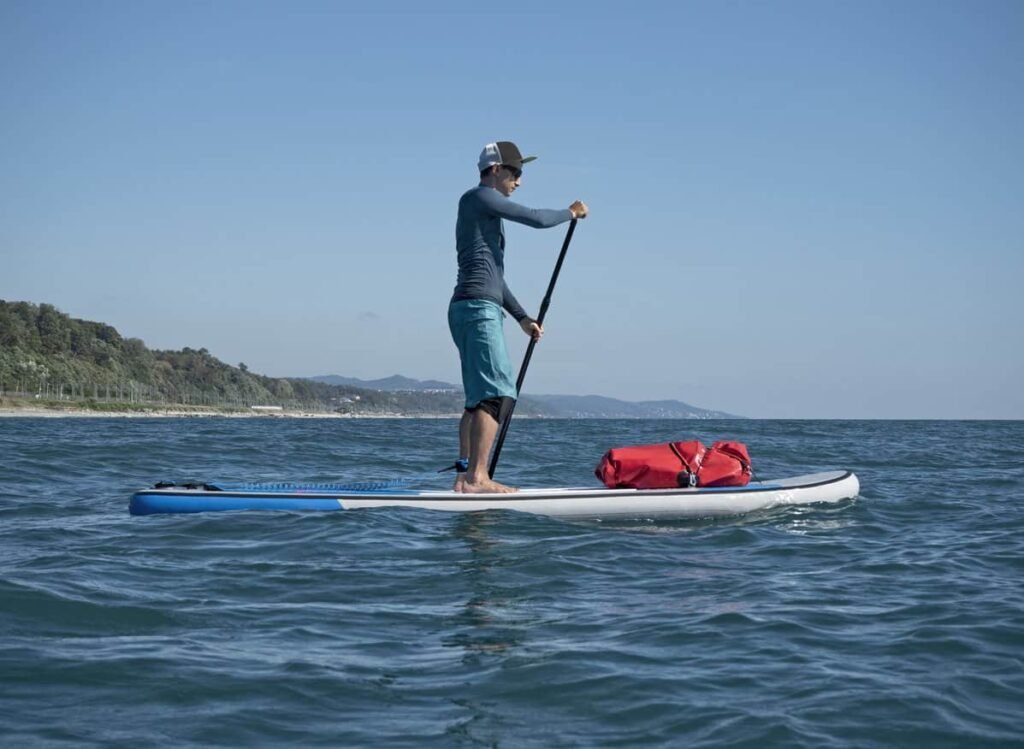
Initial Purchase Price
Typically, PVC dry bags come at a higher initial cost compared to Nylon bags. This is due to the durable material and robust construction methods used in PVC bags. However, Nylon bags, while generally more affordable, may not offer the same level of ruggedness and protection, particularly in extreme conditions.
Durability and Longevity
The longevity of a dry bag directly impacts its cost-effectiveness. PVC bags are known for their long-term durability, often lasting for several years even under rigorous use. Nylon bags, while durable in their right, might show wear and tear sooner, particularly in harsh environmental conditions. This could lead to more frequent replacements over time.
Maintenance and Repair Costs
The cost of maintaining and repairing a dry bag can add to its overall value. PVC dry bags are generally easier and cheaper to repair due to their material properties. Nylon bags, depending on the type of damage, might require specialized repair techniques, potentially adding to the overall cost of ownership.
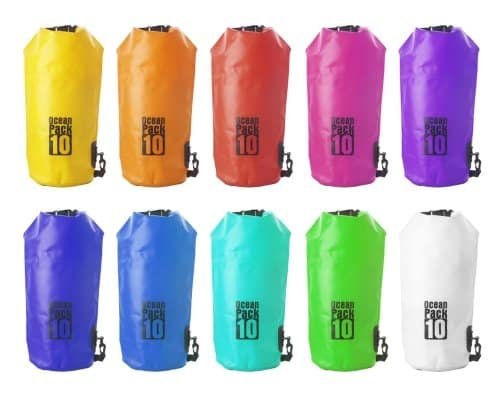
FAQ
Q1:Which is more waterproof, PVC or Nylon dry bags?
A:Both materials offer excellent water resistance, but PVC generally provides better protection in full submersion scenarios.
Q2:Can I use a Nylon dry bag for kayaking?
A:Yes, Nylon bags can be used for kayaking, especially if lightweight and flexibility are priorities.
Q3:How long do PVC and Nylon dry bags last?
A:The lifespan depends on usage and care, but PVC bags typically have a longer lifespan due to their robust nature.
Q4:How do I choose between PVC and Nylon for specific activities?
A:Consider factors like the activity’s intensity, the need for waterproofing, weight considerations, and personal comfort.
Q5:Are there eco-friendly versions of PVC and Nylon dry bags?
A:Yes, some manufacturers offer eco-friendlier versions using recycled materials or less harmful production processes.
Q6:Can I repair a PVC or Nylon dry bag if it gets damaged?
A:Yes, both materials can be repaired, but the method depends on the type of damage and the bag’s material.
Conclusion
Choosing between PVC and Nylon dry bags hinges on your specific needs and outdoor activities. PVC bags excel in durability and protection, ideal for rough water activities like kayaking or rafting. They offer long-term durability and robustness, making them a reliable option for challenging environments.Nylon bags, however, are favored for their lightweight and flexibility, perfect for activities like hiking where carrying less weight is beneficial. They provide ease of transport and adaptability, though they may not match PVC’s level of waterproof protection.Cost-wise, PVC bags could be more economical in the long run due to their durability, despite a higher initial price. Nylon bags offer a more affordable option for lighter use.In summary, the choice depends on balancing durability, weight, comfort, and cost to suit your outdoor adventures. Whether it’s PVC’s ruggedness or Nylon’s flexibility, both materials cater to different outdoor requirements.

